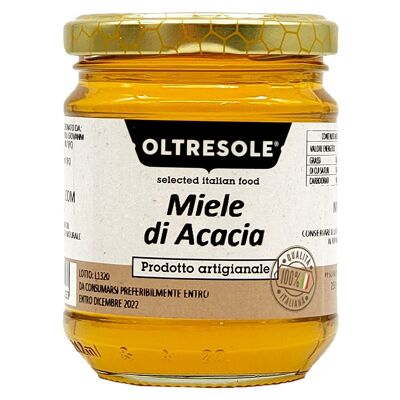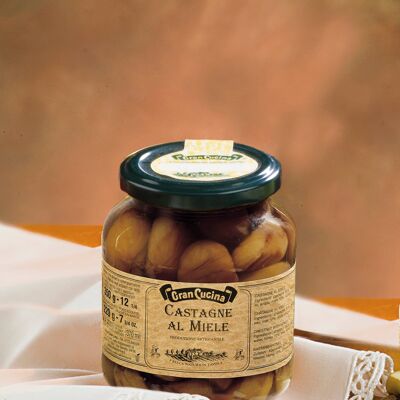


Oltresole chestnut honey is an artisanal product rich in pollen and pungent aromas, it is perfect for those who love strong and important tastes even in the choice of honey for true connoisseurs. This honey is obtained from the colorful chestnut flowers and is harvested between the months of June and October. For this reason it has a very dark yellow almost brown color with soft amber reflections. Its smell is aromatic and woody and the decidedly distinct complex flavor is much less sweet with a bitter aftertaste that can also be appreciated on savory dishes of meats and aged cheeses while it does not lend itself much to replacing sugar to sweeten herbal teas or tea. PAIRING: A nice slice of toast and a thin layer of butter accompanied by Oltresole Chestnut Honey is a great start to the day for your breakfast. Also combine it with yogurt with cream ice cream or spread on gingerbread. Use it to flavor grilled meat salads, salami or with croutons and cheese platters such as Parmigiano Reggiano, Ricotta, Stracchino and Gorgonzola. WELLNESS AND HEALTH: Chestnut honey is the most suitable among the numerous types of honey for cases of poor blood circulation and recommended for those suffering from fatigue and asthenia. Its regular consumption helps prevent aging thanks to the high amounts of antioxidants that help in the removal of free radicals and therefore protects the body from the consequences of aging. It is an excellent source of proteins, vitamins B and C and of mineral salts such as manganese, potassium, calcium and in particular iron. It also has anti-inflammatory and antibacterial properties superior to those of honeys with a more delicate color and flavor. FUN FACT: it seems that the name Castanea derives from Kastanis, a city in the ancient Pontic region of Turkey on the Black Sea where this tree was particularly widespread. The chestnut was already known and appreciated in the time of Homer who mentions it in his works as well as Galen Martial Virgil. Pliny tells us how the bread made from chestnut flour was the food of the priestesses of the cult of the goddess Cybele the goddess of the earth. In addition, we still find traces of the chestnut in "The Confessions of an Italian" by Ippolito Nievo or in Giosuè Carducci's ode to "Piedmont". It is a very long-lived plant and can exceed one hundred years of age. One proof is the centuries-old chestnut found in Menarola in Val Chiavenna (SO).

























